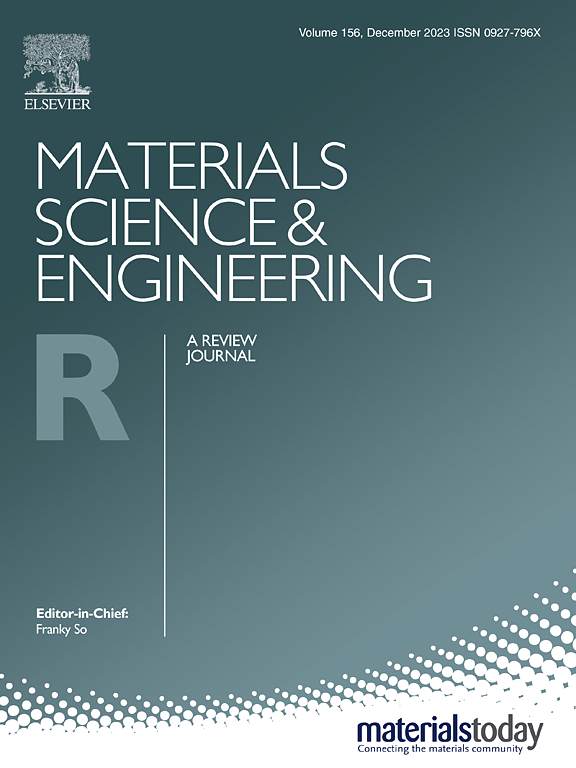高能LiFePO4电池与有条不紊地控制干电极加工
IF 31.6
1区 材料科学
Q1 MATERIALS SCIENCE, MULTIDISCIPLINARY
引用次数: 0
摘要
使用LiFePO4 (LFP)阴极的电池由于其相对于其他化学物质的低成本和安全性,已成为电动汽车应用中最值得注意的选择。然而,由于溶剂干燥过程中的毛细牵引力,聚合物粘结剂在电极上与纳米板LFP阴极形成非均匀团聚,因此利用传统湿电极工艺制备LFP纳米电极面临挑战。在此,通过从颗粒到电极水平的干电极加工的系统控制,创新地制造了高能LFP电极。阴极材料采用高丝锥密度的微米级LFP颗粒,表面包裹少量(0.3 wt%)的碳纳米管(CNTs) (LFP@CNTs)。在干电极加工过程中,通过调节剪切力使LFP@CNTs(99 wt%)和聚四氟乙烯(PTFE)粘结剂(1 wt%)之间的连续纤颤可以产生坚固而有弹性的网络,确保干加工LFP电极(LFP- de)的高电极密度超过2.4 g cc−1,而不会发生LFP@CNTs的机械断裂。LFP-DE均匀的孔隙分布和强大的电路径增强了充放电过程中Li+的扩散和电子传递动力学。即使在5 mAh cm−2的高容量负载下,LFP-DE也显示出148.4 mAh g−1的高可逆容量,在5 mA cm−2下的100次循环中保持99% %的出色容量,以及高达15 mA cm−2的出色功率容量。LFP-DE在具有石墨阳极的袋式全电池中具有超过700次的长期循环的实用性。本文章由计算机程序翻译,如有差异,请以英文原文为准。
High-energy LiFePO4 battery with methodically controlled dry electrode processing
Batteries using the LiFePO4 (LFP) cathode have emerged as the most notable option for electric vehicle applications owing to their low cost and safety relative to other chemistries. However, the fabrication of a high-energy electrode through the conventional wet electrode processing with the LFP nanoparticles faces challenges because the polymer binders heterogeneously agglomerate with the nanoplate LFP cathode throughout the electrode owing to the capillary traction in the solvent drying process. Herein, a high-energy LFP electrode is innovatively fabricated through methodical control of dry electrode processing from the particle to electrode level. The high tap density micron-sized LFP particles coated with a small amount (0.3 wt%) of carbon nanotubes (CNTs) are used as cathode materials (LFP@CNTs). In the dry electrode processing, the continuous fibrillation between LFP@CNTs (99 wt%) and polytetrafluoroethylene (PTFE) binder (1 wt%) enabled by regulating the shear force can produce the robust and elastic network, ensuring high electrode density over 2.4 g cc−1 of the dry-processed LFP electrode (LFP-DE) without mechanical rupture of LFP@CNTs. The uniform pore distribution and robust electrical pathways in LFP-DE enhances the Li+ diffusion and electron transport kinetics during the charge![]() discharge processes. Even under a high capacity loading of 5 mAh cm−2, the LFP-DE demonstrates a high reversible capacity of 148.4 mAh g−1, an excellent capacity retention of 99 % over 100 cycles at 5 mA cm−2, and outstanding power capability up to 15 mA cm−2. The LFP-DE demonstrates practical applicability with long-term cycling over 700 cycles in a pouch-type full-cell with a graphite anode.
discharge processes. Even under a high capacity loading of 5 mAh cm−2, the LFP-DE demonstrates a high reversible capacity of 148.4 mAh g−1, an excellent capacity retention of 99 % over 100 cycles at 5 mA cm−2, and outstanding power capability up to 15 mA cm−2. The LFP-DE demonstrates practical applicability with long-term cycling over 700 cycles in a pouch-type full-cell with a graphite anode.
求助全文
通过发布文献求助,成功后即可免费获取论文全文。
去求助
来源期刊

Materials Science and Engineering: R: Reports
工程技术-材料科学:综合
CiteScore
60.50
自引率
0.30%
发文量
19
审稿时长
34 days
期刊介绍:
Materials Science & Engineering R: Reports is a journal that covers a wide range of topics in the field of materials science and engineering. It publishes both experimental and theoretical research papers, providing background information and critical assessments on various topics. The journal aims to publish high-quality and novel research papers and reviews.
The subject areas covered by the journal include Materials Science (General), Electronic Materials, Optical Materials, and Magnetic Materials. In addition to regular issues, the journal also publishes special issues on key themes in the field of materials science, including Energy Materials, Materials for Health, Materials Discovery, Innovation for High Value Manufacturing, and Sustainable Materials development.
 求助内容:
求助内容: 应助结果提醒方式:
应助结果提醒方式:


